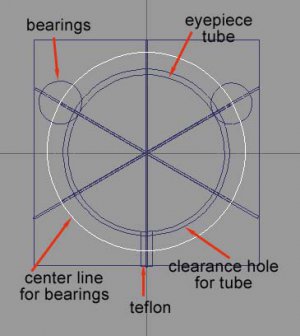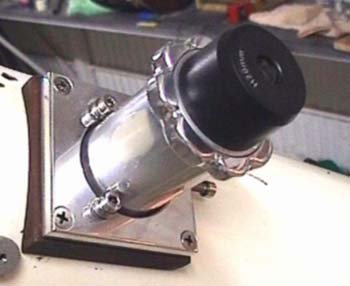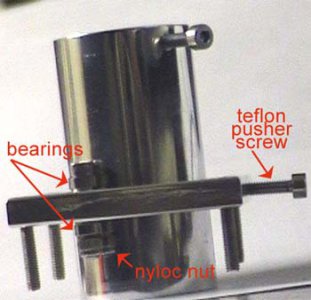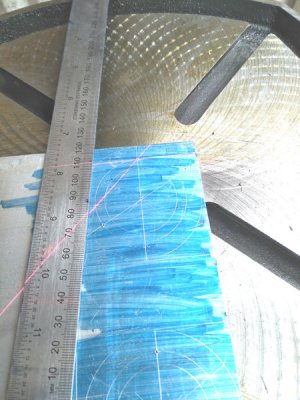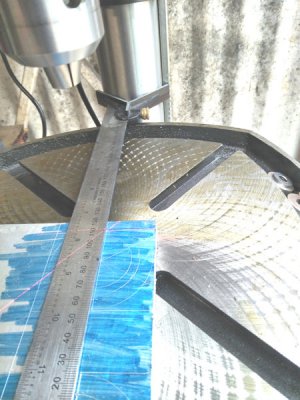Time to make the focuser units.
Some years ago I made what is termed a helical Crayford Focuser.
This part is easy but the holes for the bearing shafts have to be drilled at an angle.
heres the original but the new version will have a circular plate instead ...
Can anyone help with a more precise method of setting up the 10mm plate to drill that doesn't rely upon my old worn eye-crometer?
Very cute, grooveless helical motion!
If you have a drill motor that can be clamped in your lathe toolpost, hold
the plate in the 3-jaw and lock the spindle. One jaw of the chuck DOWN would
be a good position, gives clearance for exit hole, and easy to reposition 120 degrees.
Adjust the drill height to directly over the axis, drill shaft aligned with the
compound travel. Dial your entry angle on the compound.
Crank the compound to spot, drill, ream.
Rotate spindle 120, relock. Spot, drill, ream.
This is the kinda thing I'm envisioning...
toolpost drill adapter
Same drill can be lowered to on-axis to do lockscrew and 'teflon' cross holes.
The design is fixed in the horizontal plane (only makes horizontal holes).


